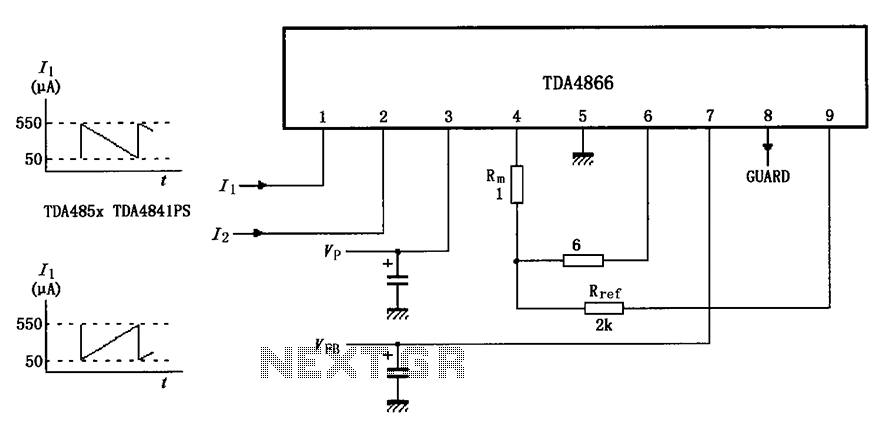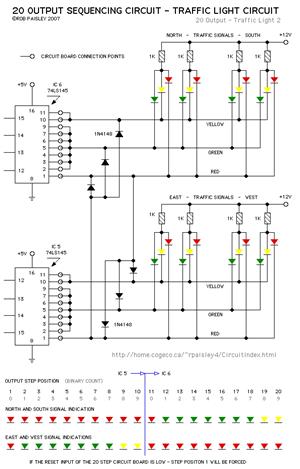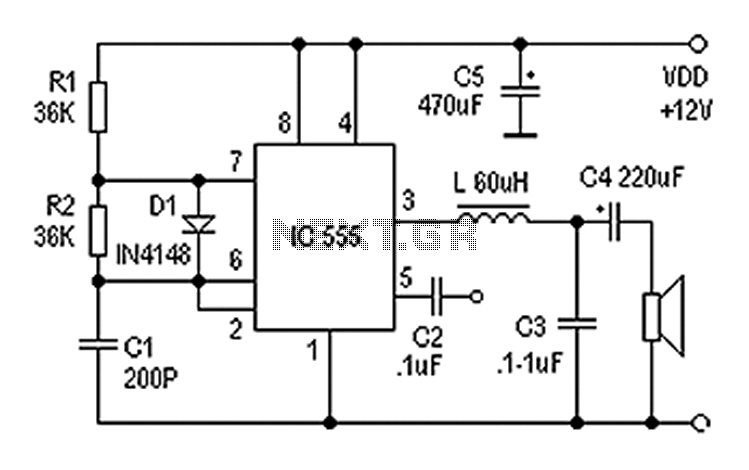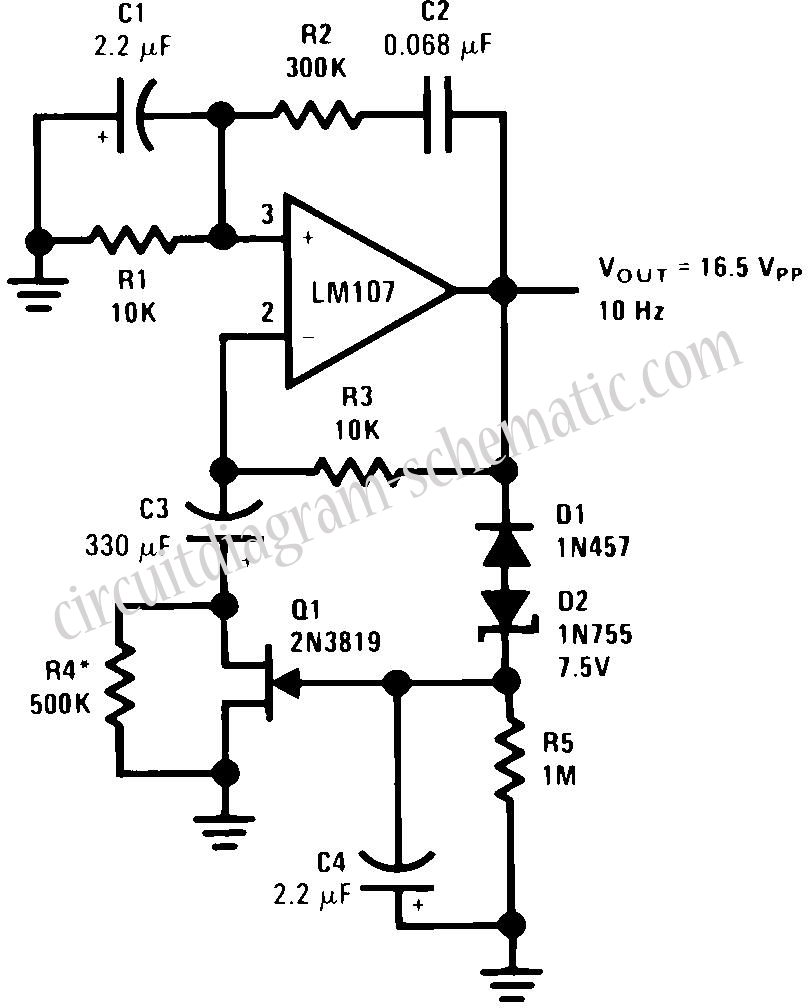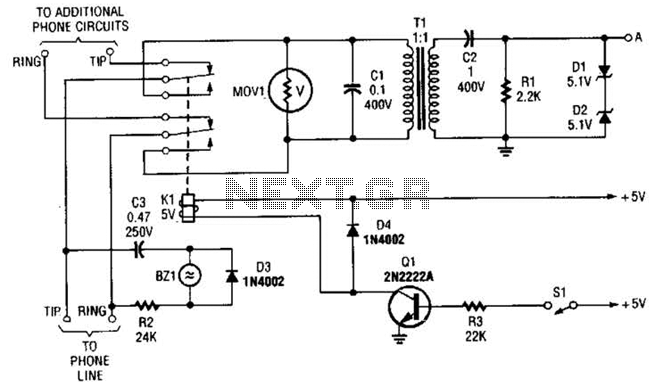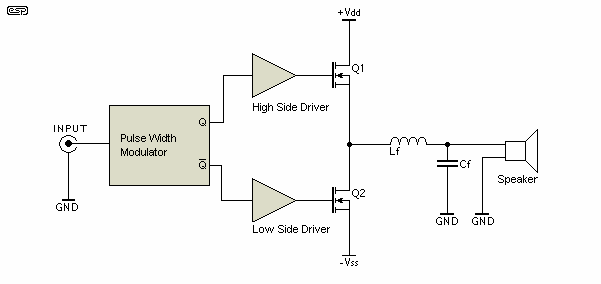
Liquid level alarm circuit which controlled by integrated circuit promixity switches
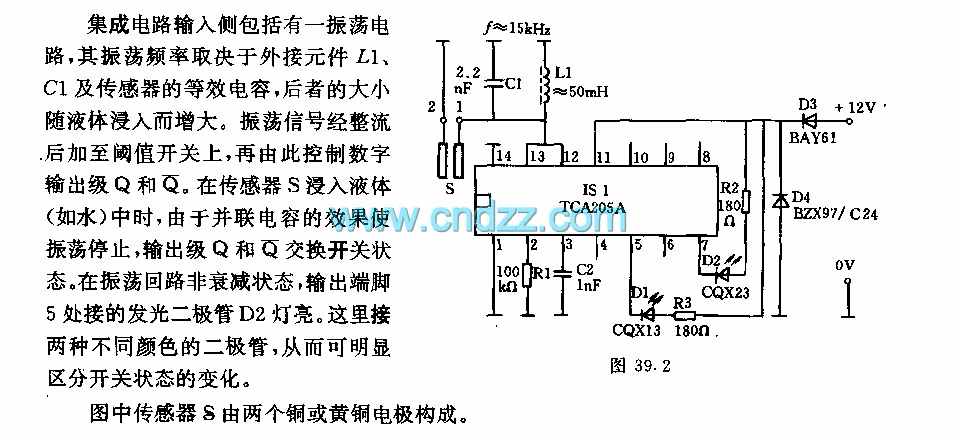
The integrated circuit input side contains an oscillating circuit, where the oscillation frequency is determined by the external components L1, C1, and the sensor's equivalent capacitance. The equivalent capacitance increases as the sensor is immersed in liquid. The oscillating signal is added to a threshold switch after being rectified, which then controls the digital output level. When the sensor S is dipped into the liquid, oscillation occurs.
The integrated circuit described is designed to detect the presence of a liquid through the variation of its oscillation frequency. The oscillating circuit's frequency is primarily influenced by the values of the external inductor (L1) and capacitor (C1), along with the sensor's equivalent capacitance, which varies with liquid immersion. The equivalent capacitance increases as the sensor comes into contact with the liquid, leading to a change in the oscillation frequency.
The output of the oscillating circuit is a signal that is fed into a threshold switch. This switch is responsible for determining whether the oscillation frequency has crossed a predefined threshold value, indicating the presence of liquid. Once rectified, the oscillating signal is processed to produce a digital output level, which can be used to trigger further actions or alerts in a system.
The design of this circuit allows for precise detection of liquid levels or the presence of specific liquids, making it suitable for applications in various fields such as industrial automation, liquid level sensing, and environmental monitoring. The choice of components L1 and C1 is critical, as they must be selected to provide the desired frequency range and sensitivity to changes in capacitance due to liquid immersion.
Additionally, the rectification process ensures that the output signal is suitable for digital processing, allowing for integration with microcontrollers or other digital systems. Overall, this circuit provides a reliable method for liquid detection, leveraging the principles of oscillation and capacitance variation.Integrated circuit input side has a oscillating circuit,it`s oscillation frequency depends on external components L1, C1 and sensor`s equivalent capacitance, the latter size increases with liquid immersion. Oscillating signal add on the threshold switch after rectified, then control digital output level. When the sensor S dipped into the liquid, Oscillation.. 🔗 External reference
The integrated circuit described is designed to detect the presence of a liquid through the variation of its oscillation frequency. The oscillating circuit's frequency is primarily influenced by the values of the external inductor (L1) and capacitor (C1), along with the sensor's equivalent capacitance, which varies with liquid immersion. The equivalent capacitance increases as the sensor comes into contact with the liquid, leading to a change in the oscillation frequency.
The output of the oscillating circuit is a signal that is fed into a threshold switch. This switch is responsible for determining whether the oscillation frequency has crossed a predefined threshold value, indicating the presence of liquid. Once rectified, the oscillating signal is processed to produce a digital output level, which can be used to trigger further actions or alerts in a system.
The design of this circuit allows for precise detection of liquid levels or the presence of specific liquids, making it suitable for applications in various fields such as industrial automation, liquid level sensing, and environmental monitoring. The choice of components L1 and C1 is critical, as they must be selected to provide the desired frequency range and sensitivity to changes in capacitance due to liquid immersion.
Additionally, the rectification process ensures that the output signal is suitable for digital processing, allowing for integration with microcontrollers or other digital systems. Overall, this circuit provides a reliable method for liquid detection, leveraging the principles of oscillation and capacitance variation.Integrated circuit input side has a oscillating circuit,it`s oscillation frequency depends on external components L1, C1 and sensor`s equivalent capacitance, the latter size increases with liquid immersion. Oscillating signal add on the threshold switch after rectified, then control digital output level. When the sensor S dipped into the liquid, Oscillation.. 🔗 External reference
